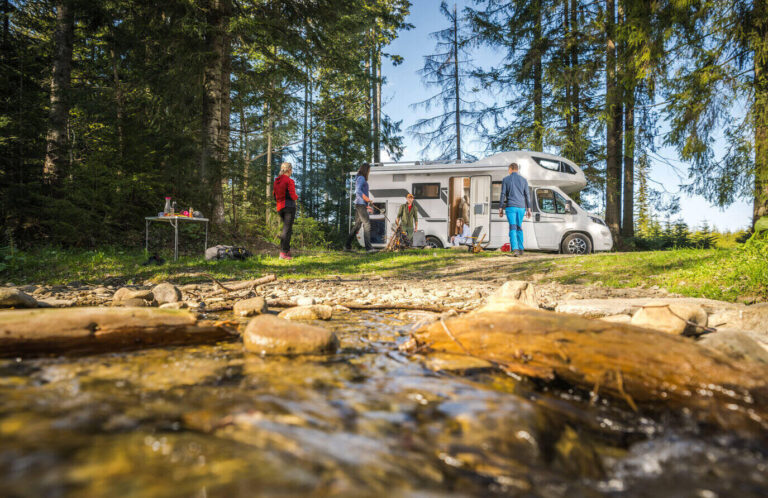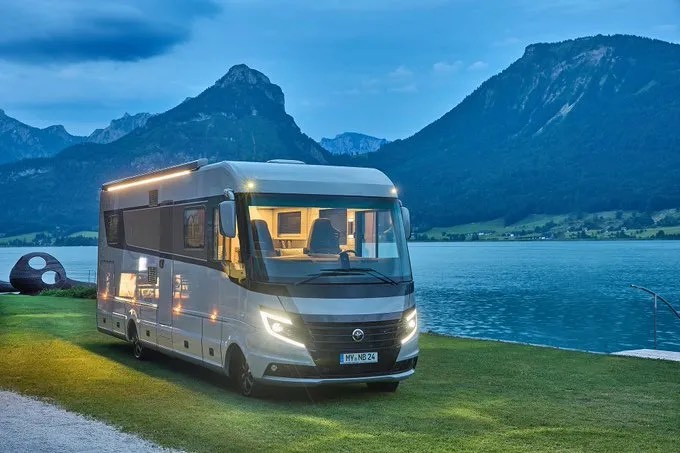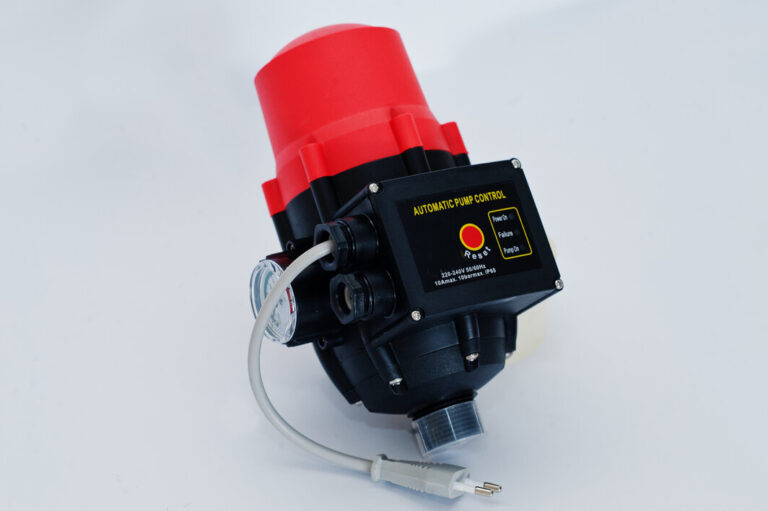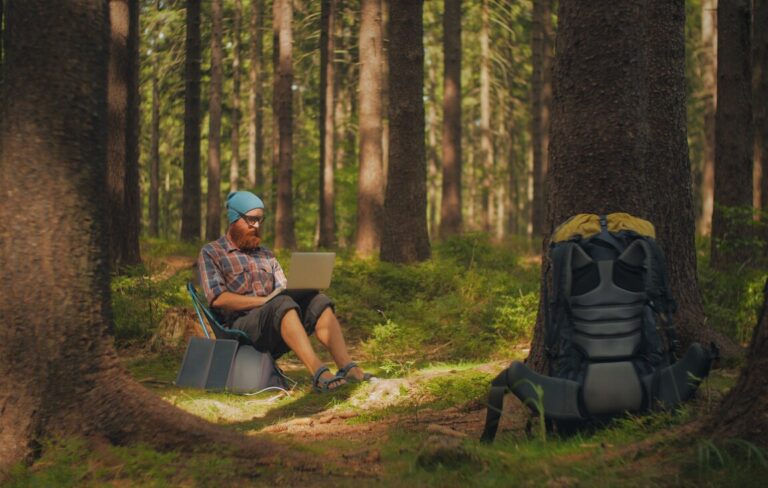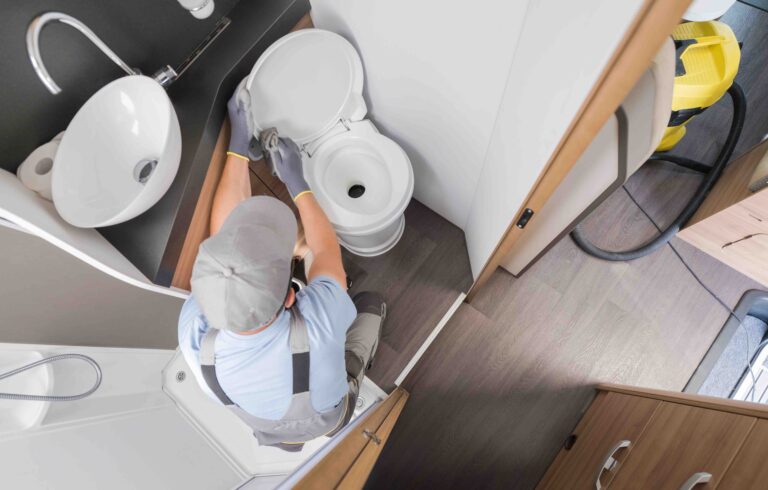Wireless Back up Cameras for Motorhomes
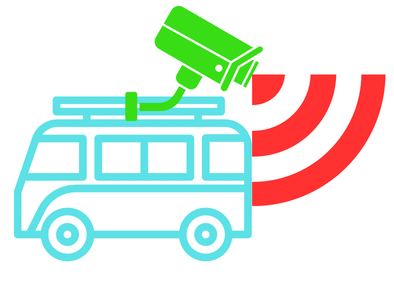
Wireless Back up Cameras
Hi Folks, here is my guide about RV Wireless Back up Cameras for those who love to travel and seek new adventures.
But with great adventures comes the responsibility – especially if you’re only used to driving a car , reversing these larger vehicles can be daunting but with practise it does get easier , I wouldn’t be with out my camera fitted to my campervan. It does get easier the more you drive and practise .
That’s where a motorhome reversing camera comes in handy. It helps you keep an eye on your surroundings and avoid accidents stops you hitting things as well as pedestrians .
In this guide well look at the:
- Importance of these cameras
- Benefits
- Demand
- Types of camera
- Factors to consider
- Camera Installation and Use
- Features
- Maintenance and Care
- My Picks
- FAQ’s
Back up cameras I THINK are a game changer for motorhome and RV safety and convenience. By using my camera, I gain a clearer view, making navigation and parking easier. And with less stress, especially in car parks .
The Importance of Having a RV Back up Camera
Motorhomes and RV’s are not small vehicles, and visibility can be limited from the driver’s seat. Especially down the front window pillars as well as any fitted blinds to the vehicle. It really is noticeable compared to a car .
When reversing, there is always a risk of hitting an object, person, or another vehicle that you may not see in your mirrors or blind spots.
A motorhome reversing camera provides drivers with a clear view of what’s behind them while backing up. The camera gives you eyes in the back of your head so you can confidently manoeuvre in tight spaces or narrow driveways without risking damage to your vehicle or surroundings.
Benefits
- The camera will provide a clear view of the rear and surroundings
- Eliminate Blind spots
- See Clearly, Even at Night
- Avoid accidents and collisions.
- Reduce Insurance claims
- Reduce the stress of reversing difficult situations
- Reduce the amount of times you get out to walk around the back to have a look at there distance you have.
The Increasing Demand for RV Back up Cameras.
In recent years, the popularity of motorhomes and Vanlife has grown significantly. More people are opting for this type of vehicle as their preferred mode of transportation for traveling and camping and living full time like me . ( Fully recommend full time VANLIFE)
As such, there has been an increasing demand for safety features that make driving these large vehicles easier and safer. Also year on year these features are getting better and better .
We expect this trend to continue as more people seek out motorhomes as their go-to mode of transportation for family trips, adventures with friends, and solo getaways.
Types of RV Back up Cameras
Wireless vs. Wired
When it comes to motorhome reversing cameras, you can choose between wireless or wired options.
Wireless cameras: use radio frequency to transmit the video feed from the camera to the monitor. The benefit of wireless is that it’s easier and less time-consuming to install than wired options, as there’s no need to drill holes in your motorhome for cables.
Wired cameras: offer a more stable and reliable connection than wireless options. They typically come with longer cables that allow you to install them on larger motorhomes without signal loss or interference issues. However, installation can be trickier if you’re not familiar with wiring.
Single vs. Multiple Camera Systems
Another decision you’ll need to make is whether you want a single-camera system or multiple-camera system for your motorhome.
Single-camera :systems are suitable for smaller motorhomes and travel trailers because they offer a clear view of what’s behind your vehicle. ( this is what I have )
Multiple-camera system: for larger motorhomes or fifth wheels, may be necessary for full coverage of the entire vehicle. These systems typically include one camera at the back and another on either side of the vehicle, ensuring that every angle is covered.

Infrared Night Vision vs Regular Vision
When shopping for a motorhome reversing camera, consider whether you’ll be driving at night or in low-light conditions.
Infrared night: vision cameras use infrared technology to capture clear images in complete darkness, making them ideal for nighttime driving.
Regular vision: cameras rely on ambient light sources such as streetlights or headlights from other vehicles to capture images and may not perform well in low-light conditions.
It’s important to note that not all infrared night vision cameras are created equal – some have better quality images than others. Be sure to read product reviews before purchasing one to ensure that you’re getting a quality camera that will meet your needs and budget .
Overall, the type of motorhome reversing camera you choose depends on your specific needs and preferences.
By considering the pros and cons of wireless vs wired, single vs. multiple cameras, and infrared night vision vs regular vision, you’ll be able to make an informed decision that best suits your budget and motorhome needs.
Factors to Consider When Choosing a Motorhome Back up Camera
Size and Placement of the Cameras
When choosing a motorhome reversing camera, one of the most important factors to consider is the size and placement of the camera(s).
The size: of the camera should be appropriate for your motorhome, as it can affect visibility while driving. It’s recommended to choose a compact camera that doesn’t obstruct your view during driving or when parked.
Placement : is also important. Some cameras can be mounted on license plates, while others are attached near brake lights or on top of the vehicle.
Generally, cameras that are mounted higher give a better view than those that are lower on the back. It’s best to choose a position where you will have an unobstructed view.
Tip : I personally think cameras fitted near the roof looking down are the best to have
Image Quality and Resolution
Another important factor when choosing a motorhome reversing camera is image quality and resolution and size of your screen.
A high-quality image ensures you see everything clearly even at night or in low lighting conditions. Resolution determines how sharp an image will appear on-screen, with higher resolutions providing sharper images.
However, high resolution cameras often have higher prices too. It’s recommended to go for cameras with at least 720p (HD) resolution or above for clear visuals.
Viewing Angle and Coverage Area and magnification
The viewing angle of your reversing camera affects how much area you can see behind your motorhome when backing up.
A larger viewing angle means more visibility, which reduces blind spots and makes it easier to park without hitting anything. A coverage area is also important as it tells you how far back from your vehicle you can see objects.
Cameras with wider coverage areas help avoid hitting objects like poles or other vehicles while reversing. When choosing a motorhome reversing camera model, consider one with wide-angle lenses and large coverage areas for maximum visibility behind your vehicle.
Tip: My camera fitted to my new vehicle magnifies the image more than I’m used to and i will have to get used to it with practise as well as getting used to the distance as I don’t have distance indicators or a beeper .
Compatibility with Your Motorhome’s Make and Model
Not all motorhome reversing cameras are compatible with all makes and models.
It’s important to check if the camera system you choose is compatible with your motorhome before purchasing. Check with dealer or professional fitter .
Compatibility issues can affect the functionality of the camera or even cause damage to your vehicle, so ensure that you select a model that matches your motorhome’s specifications.
Camera Installation and Use
Installation of a motorhome reversing camera can be complicated for some people. If you’re not tech-savvy or interested in spending hours installing the system, it’s best to choose an easy-to-install model.
Tip: Here in the UK we have Halfords a large retail shop all over the uk that offers a drive in type service to fit your cameras .Im currently doing research on a forward facing camera and probably have Halfords fit this device.
Some cameras come as plug-and-play models, while others require professional installation.
Choose a model that suits your experience level and preferences.
Ease of use is also important, especially if you’re not comfortable using technology. Pick a user-friendly camera system that doesn’t require much effort or technical know-how to operate comfortably.

Additional Features to Look For
Audio Capabilities: Hear What You Can’t See
When it comes to choosing a motorhome reversing camera, having good visual clarity is only half the battle.
In some cases, audio capabilities can make all the difference when backing up or manoeuvring your vehicle in tight spaces.
With an audio-enabled camera system, you’ll be able to hear what’s going on outside of your vehicle even if you can’t see it.
Tip: If there is a loud reversing noise from your camera outside the vehicle you might sound like a delivery truck??
This is especially helpful for detecting obstacles or pedestrians that may be out of view from the camera. Some motorhome reversing cameras come with built-in microphones that allow you to hear sounds outside of your vehicle.
Others may require an external microphone or speaker setup for audio playback. When considering this feature, make sure you choose a camera system that offers clear and reliable audio quality.

GPS Tracking: Keep an Eye on Your Vehicle’s Location
GPS tracking is another helpful feature to look for in a motorhome reversing camera system.
With GPS tracking enabled, you’ll be able to keep tabs on your vehicle’s location at all times – even when you’re not behind the wheel.
This feature is particularly useful if you plan on parking your motorhome in unfamiliar areas or leaving it unattended for extended periods of time. By tracking the location of your vehicle, you can rest assured knowing that it’s safe and secure.
Keep in mind that not all reversing cameras come equipped with GPS tracking functionality. If this is a priority for you, be sure to choose a model that includes this feature.
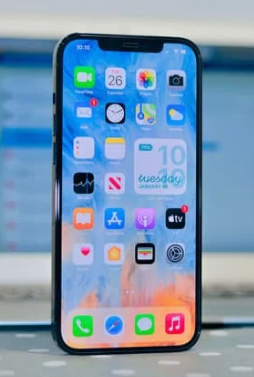
Mobile App Compatibility: View Your Camera Feed Anywhere
Mobile app compatibility is another important factor to consider when choosing a motorhome reversing camera system.
With a compatible app installed on your smartphone or tablet, you’ll be able to view live footage from your camera – no matter where you are.
This feature is especially helpful if you often travel alone or with a partner who may not be able to assist with backing up or parking.
With a mobile app, you can view your camera feed from the driver’s seat, allowing for more control and flexibility when it comes to manoeuvring your vehicle. Most motorhome reversing camera systems that offer mobile app compatibility will require an internet connection to stream live video.
Some may also require additional setup or configuration before you can start using the app. Be sure to read through the instructions carefully before purchasing a camera system with this feature.

Maintenance and Care
If you have taken the time and money to invest in your camera system it would be a good idea to do some maintenance
- Regularly inspecting and cleaning the camera lens is a simple yet effective maintenance step, as it helps to prevent dirt, dust, or debris from obstructing the view.
- Ensure that the camera’s mounting brackets and connections are secure, as vibrations and rough roads can sometimes loosen them.
- Check the camera’s battery or power source and replace them as needed to avoid any unexpected power failures.
- Making sure to clean the lenses properly.
- Protect the cameras from extreme weather conditions by investing in weatherproof covers or enclosures.
- Inspect the camera’s wiring and connectors for any signs of wear or corrosion, as these can affect the camera’s functionality.
My Picks for RV Wireless Back up Cameras
The Best Wireless Camera:Haloview Range Dominator Single Camera System RD7P 7 Inch 720P Wireless Backup Camera
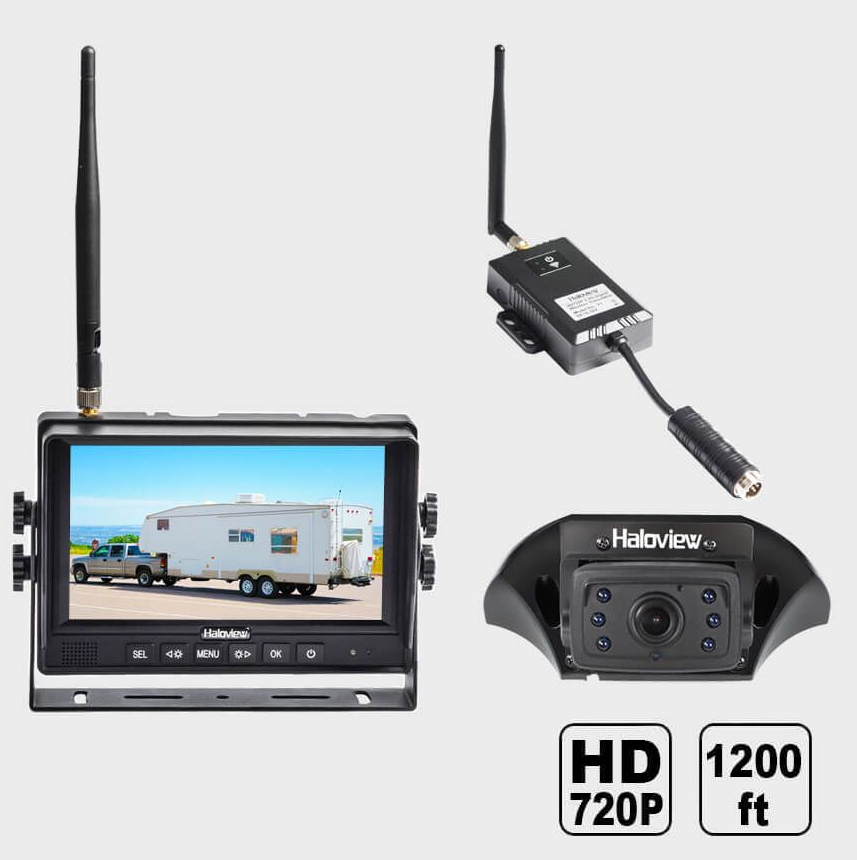
The Haloview RD7P is an excellent wireless camera that provides a clear and stable image without any interference. It has a 7-inch monitor and a waterproof camera that can be mounted anywhere on the motorhome.
The camera is equipped with night vision, which provides good visibility at night, and it has a wide viewing angle of 130 degrees.
A microphone built-in the camera picks up sounds which make reversing safer
The Best Wired Camera: Furrion Vision S
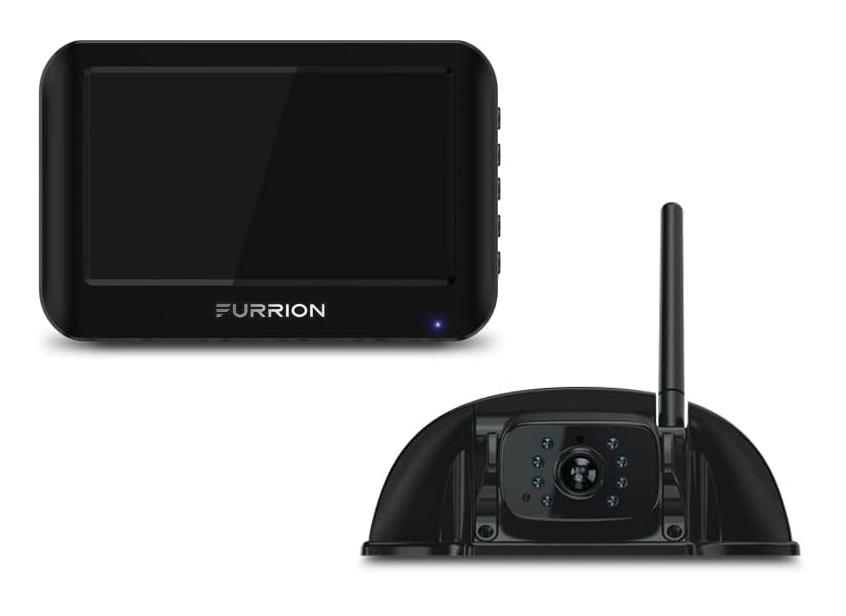
The Furrion Vision S is an exceptional wired camera system that comes with a 7-inch monitor and up to four cameras for full coverage of your motorhome’s surroundings. The cameras have a viewing angle of 120 degrees and are waterproof, making them durable against harsh weather conditions.
The monitor provides good resolution and clear images even in bright sunlight. One drawback of this system is that installation can be challenging, especially if you’re not experienced with wiring.
Its also a Amazon Choice Best Seller
The Best Value Camera: LeeKooLuu LK7
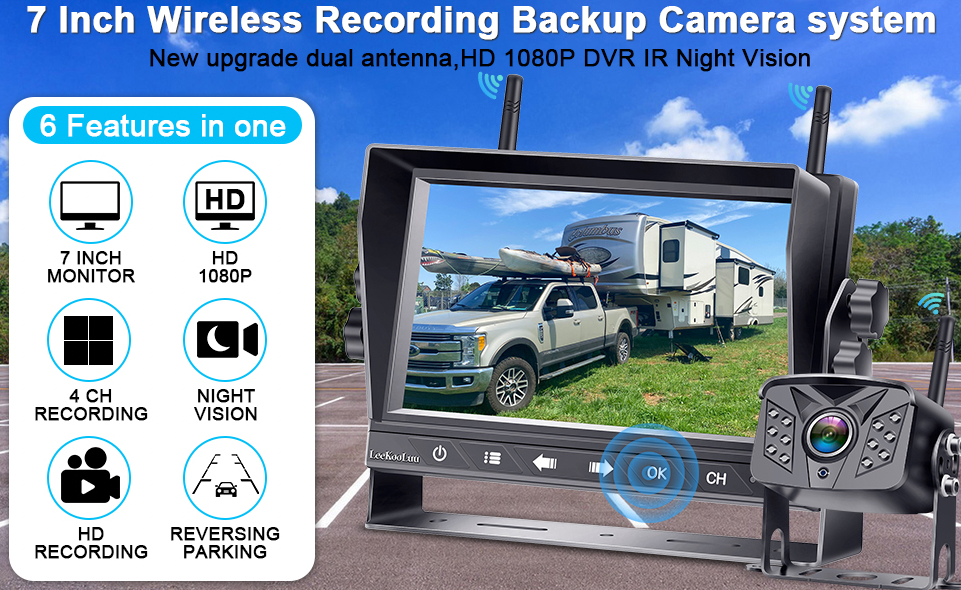
If you’re looking for an affordable option without sacrificing quality, the LeeKooLuu LK7 is an excellent choice.
This wireless camera comes with a 7-inch display monitor and one waterproof camera that can be mounted on the back of your motorhome easily.
It has super night vision for improving visibility in low light conditions, as well as a viewing angle of 150 degrees for better coverage around your vehicle as well as loop recording .
Although this option doesn’t have Wi-Fi capabilities it can be upgraded to 4 cameras and has a host of features found on more expensive units, it’s still an excellent value.
The Best Multi-Camera System: Furrion Vision S 3-Camera Wireless RV Backup System
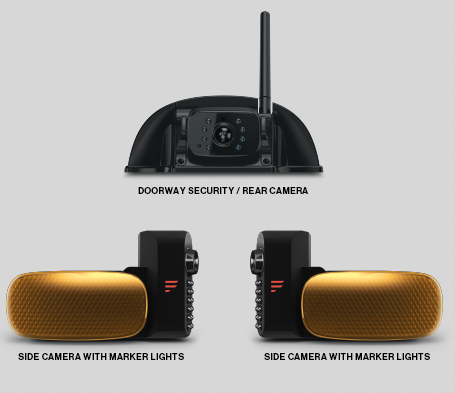
If you’re looking for a multi-camera system, the Furrion Vision S is an excellent option.
It comes with a 7-inch monitor and three waterproof cameras that can be mounted on the sides or rear of the motorhome, providing full coverage of your surroundings.
The cameras have a 120-degree viewing angle and side camera angle at 60-degree, and night vision for better visibility in low light conditions. Also comes with Rear assist marker lines.
The system also has Motion detection and microphone capabilities, allowing you to hear what’s happening around your vehicle. However, it is more expensive than some other options on this list.
Choosing the best motorhome reversing camera for your vehicle depends on several factors such as image quality, viewing angle, ease of installation and use.
The Haloview MC5111 is the best wireless option with its stable connection and wide viewing angle.
On the other hand, if you prefer a wired system with multiple cameras for full coverage, consider investing in Furrion Vision S.
For those who want an affordable option without sacrificing quality should choose LeeKooLuu LK8.
If you want a multi-camera setup with audio capability then Furrion Vision S is the best choice but it comes at a higher price point than other options mentioned above.
FAQ”s
Q: How do I install a wireless backup camera on my RV?
A: Installing a wireless backup camera is relatively straightforward. Start by mounting the camera at the desired location on the rear of your RV. Then, connect the camera’s power source to a reliable power supply and pair it with the display unit inside your vehicle. Follow the manufacturer’s instructions for specific installation steps and ensure a secure and stable connection.
Q: Can I use my RV wireless backup camera while driving?
A: Although the primary purpose of a wireless backup camera is for reverse maneuvering, some models allow you to use them while driving. However, it is essential to prioritize safe driving practices and not solely rely on the camera display. The camera can serve as an additional aid, but your focus should primarily be on the road ahead.
Q: Do wireless backup cameras work at night or in low-light conditions?
A: Yes, most wireless backup cameras are equipped with infrared (IR) technology, enabling them to capture clear images even in low-light or nighttime conditions. The IR lights on the camera illuminate the area behind your RV, providing enhanced visibility when natural light is insufficient.
Q: Can I connect multiple wireless backup cameras to my RV?
A: Yes, many wireless backup camera systems offer the capability to connect multiple cameras. This allows you to install additional cameras in different locations, such as the sides or interior of your RV, providing a comprehensive view of your surroundings. Make sure to choose a system that supports multiple camera inputs and follow the manufacturer’s instructions for syncing and switching between cameras.
Q: How do I troubleshoot wireless interference or poor signal quality?
A: If you’re experiencing wireless interference or a weak signal, there are a few steps you can take to address the issue. Start by ensuring that the camera and display unit are within the recommended wireless range. Next, check for potential sources of interference, such as other electronic devices or objects obstructing the signal. If needed, adjust the position or angle of the camera and receiver to optimize signal strength. Lastly, consult the user manual or contact the manufacturer’s customer support for further troubleshooting guidance.
Q: How do I troubleshoot wireless interference or poor signal quality?
A: If you’re experiencing wireless interference or a weak signal, there are a few steps you can take to address the issue. Start by ensuring that the camera and display unit are within the recommended wireless range. Next, check for potential sources of interference, such as other electronic devices or objects obstructing the signal. If needed, adjust the position or angle of the camera and receiver to optimize signal strength. Lastly, consult the user manual or contact the manufacturer’s customer support for further troubleshooting guidance.
Q: How do I troubleshoot wireless interference or poor signal quality?
A: If you’re experiencing wireless interference or a weak signal, there are a few steps you can take to address the issue. Start by ensuring that the camera and display unit are within the recommended wireless range. Next, check for potential sources of interference, such as other electronic devices or objects obstructing the signal. If needed, adjust the position or angle of the camera and receiver to optimize signal strength. Lastly, consult the user manual or contact the manufacturer’s customer support for further troubleshooting guidance.
Conclusion
Thanks for reading my RV Wireless Back up Camera guide.
Choosing the right motorhome reversing Back up Camera is an important decision that requires careful consideration. You want to ensure that you invest in a camera that meets your needs, requirements, and budget, while providing a clear image of what’s behind you.
Wireless cameras are convenient and easy to use but may have connectivity issues. Wired cameras provide more reliability but require more installation effort.
Single-camera systems are cheaper but may not provide full coverage,
Multiple-camera systems can be expensive but offer extensive coverage.
You should also consider factors such as image quality, viewing angle, compatibility with your motorhome’s make and model, ease of installation and use.
A high-resolution camera with a wide-angle lens will give you the best picture while parking or reversing your vehicle. Additional features like audio capabilities; GPS tracking; mobile app compatibility are worth considering if they fit into your budget and requirements.
Ultimately, choosing the best motorhome reversing camera for 2023 will depend on your specific needs and preferences. Investing in a high-quality motorhome reversing camera is essential for safe driving and parking of your vehicle.
Make sure to take time to research different options before making a purchase decision so that you can find one that suits all of your needs. Having a reliable motorhome reversing camera installed will give you peace of mind and confidence , when manoeuvring even in tight spaces or when backing up, and if your interested in ideas for earning money while on the road check out our blog on this.
Written by Rich
